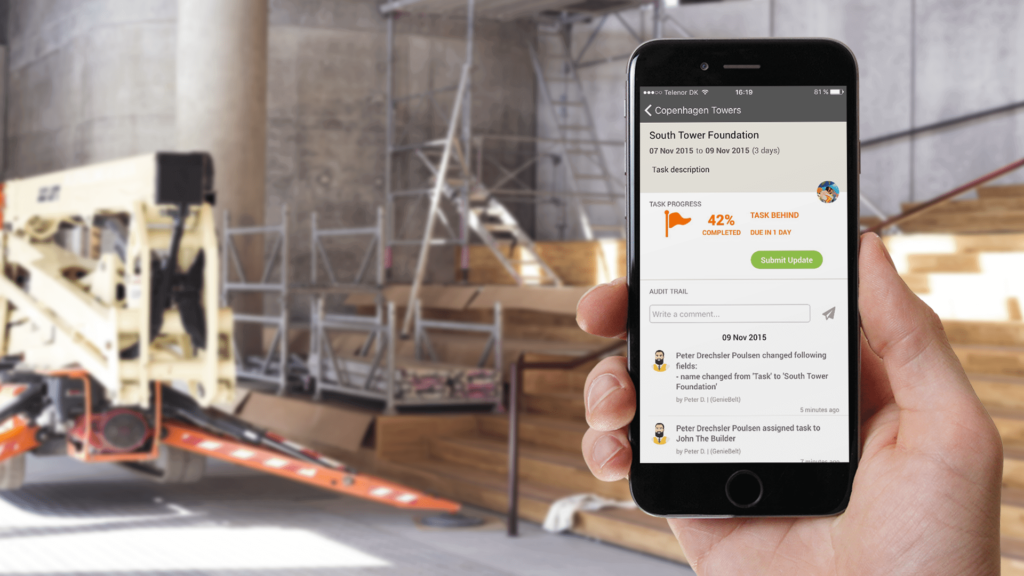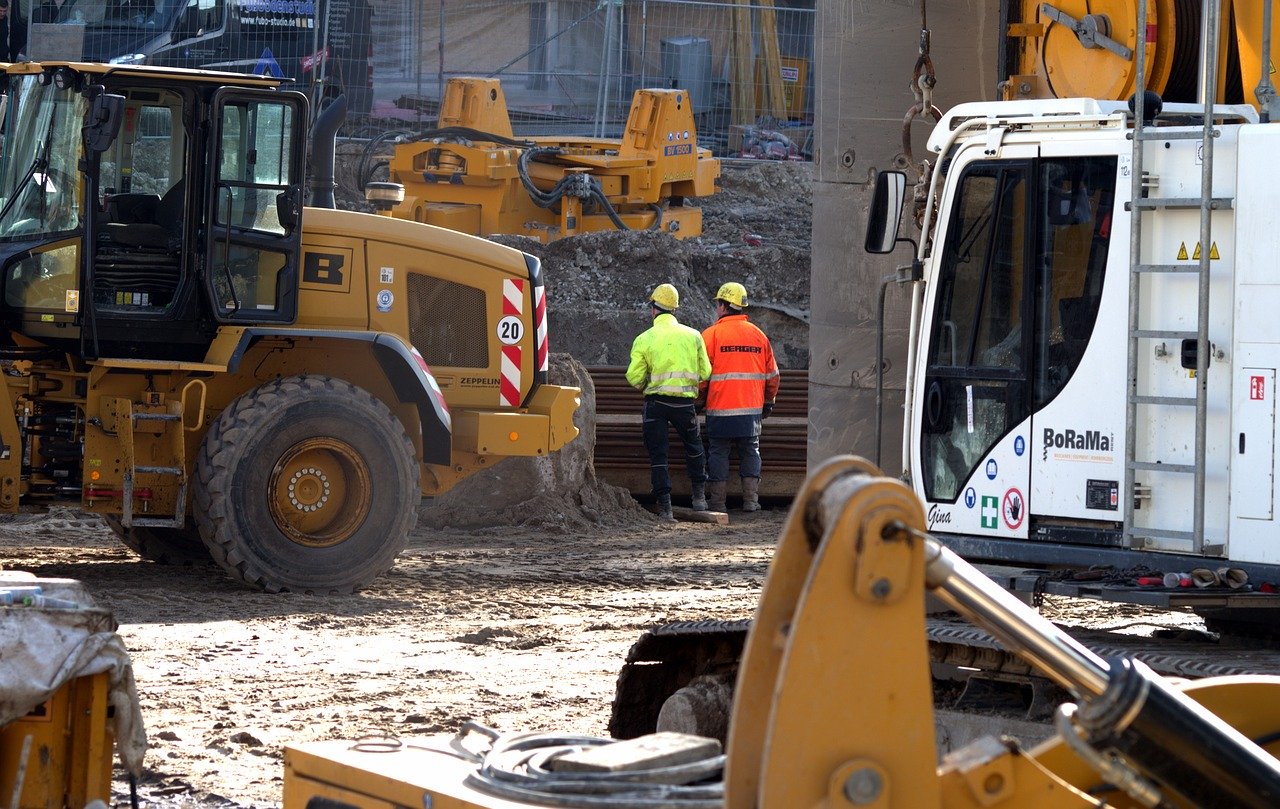The construction industry is on a crucial path. Lack of transparency, fragmented communication and disappointingly high waste rates are only a few of the problems that construction is currently facing. Nevertheless, a significant change has started to be noticed. The reason behind this change is related to the use of digital tools and more specifically of real-time project management software.
GenieBelt CEO, Ulrik Branner, talked to Construction News about the future of the industry and highlighted the imminent need for the whole sector to become more accountable and to invest on empowering the communication between the site and the office.
‘‘We want to ensure that construction becomes more transparent – we want to build the trust. If you communicate and collaborate in an open manner you will have massive gains’’, says Ulrik Branner.
The problem of the industry in numbers
The construction industry is a $10 trillion giant and its value is expected to increase even more during the upcoming years as a result of the extensive urbanisation that is observed globally. On top of that, the building industry is representing at the moment approximately 10% of the world GDP. These numbers are showing in an emphatic way that there are simply too much at stake for the industry to remain inert against such significant efficiency bottlenecks.

And that’s only the tip of the iceberg, as Ulrik Branner mentions:
“You have an industry that is contributing 40% of global waste and is working on a 30% efficiency measure, so it’s extremely low performing. On average 10% of everything that gets built is redone due to mistakes. It’s crazy!”.
So, in a nutshell, the main struggles of the construction industry could be summed up to the following:
High waste rates
These horrific waste rates that construction has to battle against are one of the main consequences of poor data management.
“Construction produces the second highest amount of information globally, but it throws away 95% of that”, highlights Ulrik Branner.
Building projects are constantly getting more complicated and communication between the various parties becomes harder and harder. This results in costly material, budget overruns and workforce waste. The industry should develop a smarter and more efficient strategy concerning workflow information. Only then, it will be able to manage resources -of any kind- properly.
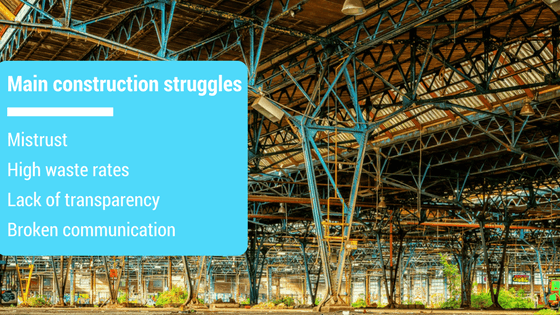
Lack of transparency
As a natural continuation of the prior remark, lack of accountability is also something that hurts the construction industry. Not being able to keep close track of every single aspect of the project is regarded as the main factor behind this issue.
“This industry has really been lacking accountability. Who made the mistake? Why did they make the mistake? What the industry needs is transparency, because with that comes accountability”, says Ulrik Branner.
To put it simply, the lack of a transparent construction process where you can easily go back, learn from your mistakes and eventually improve is one of the most profound problems that the industry has to face.
Broken communication
Fragmented communication is one of the biggest obstacles that construction is battling against. Real-time project updates could be the solution to such hurdles as they could tackle inefficiency and allow for a smoother development of the building procedure. According to the latest report by the Danish National Building Research Institute, the use of construction software (ie. GenieBelt) can result in project savings of up to 7%.
Mistrust
Broken communication leads to mistakes and lack of trust between the various project agents. It’s simple and extremely costly for construction. Disputes are part of a very unpleasant reality for the industry which will only get worse if we keep ignoring the importance of sharing the generated data and keeping a detailed record of it.
Read also: The biggest construction companies in the world
It’s evident, then, that the problem lies on the way that the system is structured and not on the people who work in construction. GenieBelt CEO is also acknowledging this fact and notices that miscommunication and distrust are those to blame, as there are million of construction professionals who try to do their best every day both on the site and the office.
“Transform or die”
When we are referring to construction software and digitization of the industry, it’s critical to understand that the main point of focus isn’t necessarily to revolutionize the whole industry by changing its core practices and by introducing flamboyant technologies.

The primary goal is to improve the communication between the construction site and the office, to provide transparency and data-driven decision making.
“It’s not because you need to revolutionise the technology or because you need to find new ways of building. You just have to build more efficiently”, says GenieBelt CEO.
That being said, a real-time project management tool such as GenieBelt can empower the communication channels between the office and the site and become a transformative power for the construction process. It’s those small yet substantial changes that we have to go after if we want to create a better future for construction. An open shared platform where all the produced data will be effectively stored and managed. Otherwise, the industry is in serious danger of getting trapped in its own micro-world communicating only through texts and countless emails.
Contractors resistant to change
It’s easy to claim that construction is just a conservative industry that is negative toward anything new. Nonetheless, that’s not exactly accurate. There are sometimes deeper reasons why the industry is holding back when it comes to innovation. Ulrik Branner explains why:
“We are still meeting a lot of resistance, because significant parts of this industry are earning their money out of distrust- out of mistakes that are made, things that need to be rebuilt, things that have been forgotten. And that just isn’t good for the customer”.
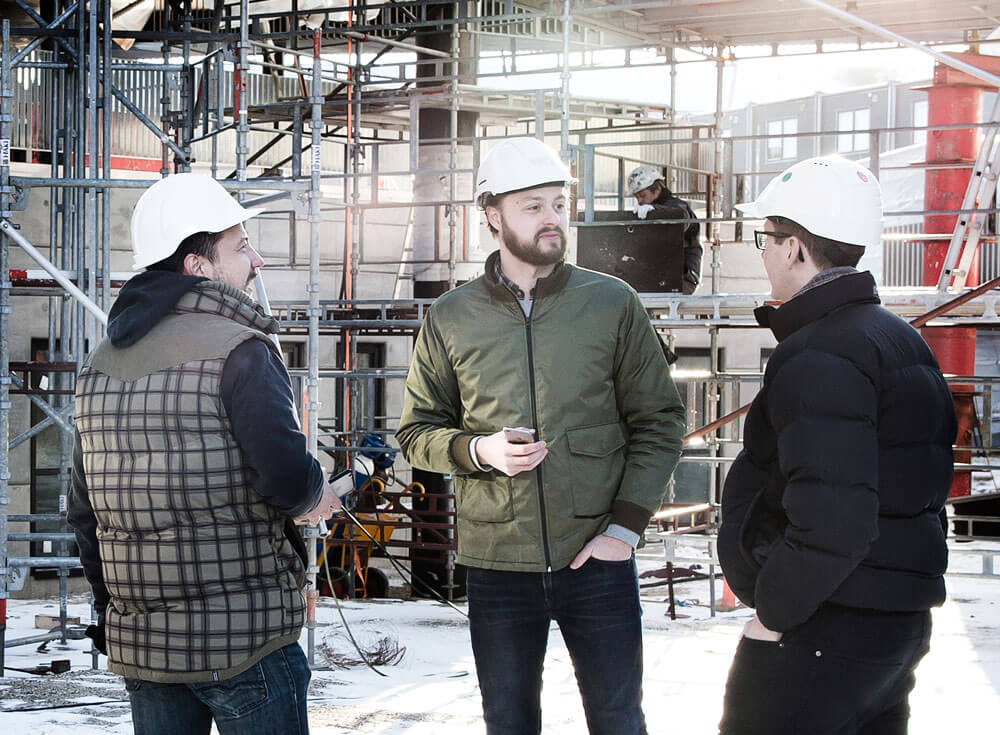
That’s why, clients could be the main actors of change both in the private and the public sector. Because they are the ones who will benefit the most from a digitised and highly optimised construction process.
“Now is the time for everyone in the industry to take the stand and be on the side of transparency and accountability and mandate this throughout their projects.”, he adds.
The good news is that the industry starts listening and some critical changes toward the use of real-time project management software are eventually happening, according to Ulrik Branner:
“We start seeing the developers, the government, the forward thinking contractors and the Danish municipalities stepping in and mandating that when people build, this is how they communicate and collaborate, and we now also see the forward-thinking contractors are changing the way they work and are actively engaging in developing and pushing GenieBelt out to the sites”.
The Niels Bohr Building
The massive project of the Niels Bohr Science Park (University of Copenhagen) has triggered a lot of discussions due to the big problems that it faced in terms of cost and efficiency. We are talking about a 53000 square meter building with a budget of €350 million. On top of that, the project was consisted of 550 people and approximately a hundred decision-makers. It is clear, then, that the coordination of every single task was quite a challenge.
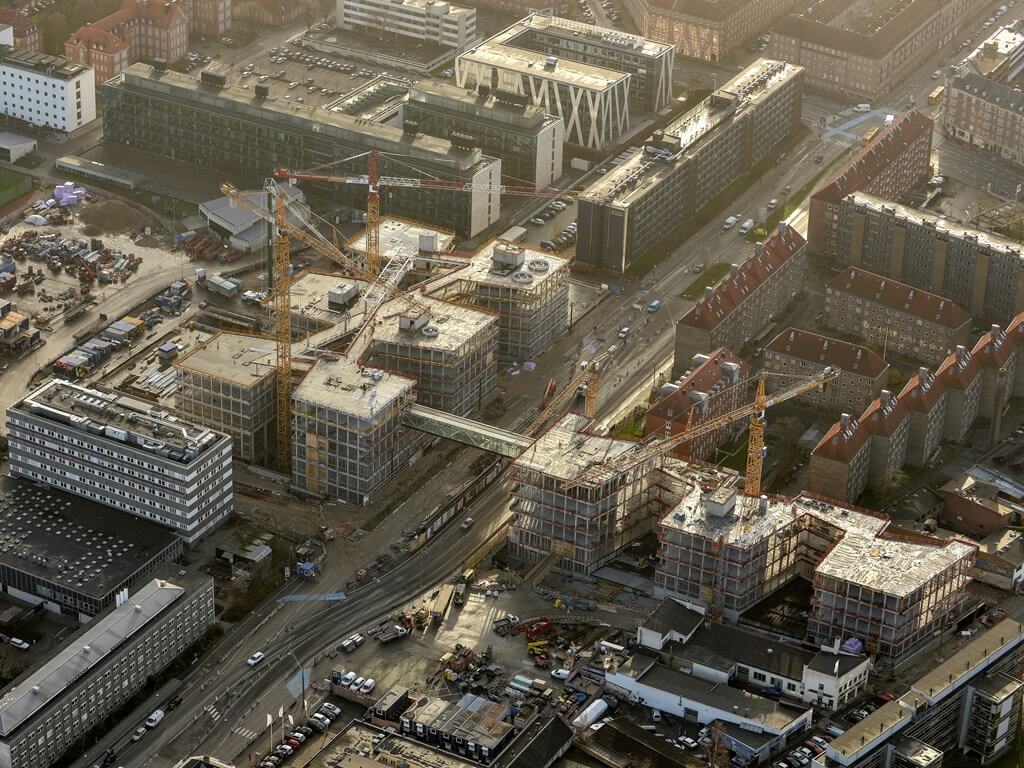
After a number of significant hiccups, the Danish state decided that the use of GenieBelt was the only way forward. And as it was proven by the latest research of the Danish National Building Research Institute, it was the right decision. The use of GenieBelt led to a direct saving of 7% on the budget of the project. It goes without saying that, this is an incredible amount of saving if we take into consideration that we are talking for a €350 million project.
Learn more: Up to 7% savings on construction projects run using GenieBelt shown in Danish research report
But there’s also another point that we have to keep out of the Niels Bohr project. The Danish government actively supported the effort for a more transparent and more open construction process. This can be extremely promising for the future of the industry and unlock a number of additional benefits.
Conclusion
Unlocking efficiency in construction is a long and very challenging journey. But it has to be done! We need accountability and transparency and the way to get them is through powerful communication and data-driven decision making.
